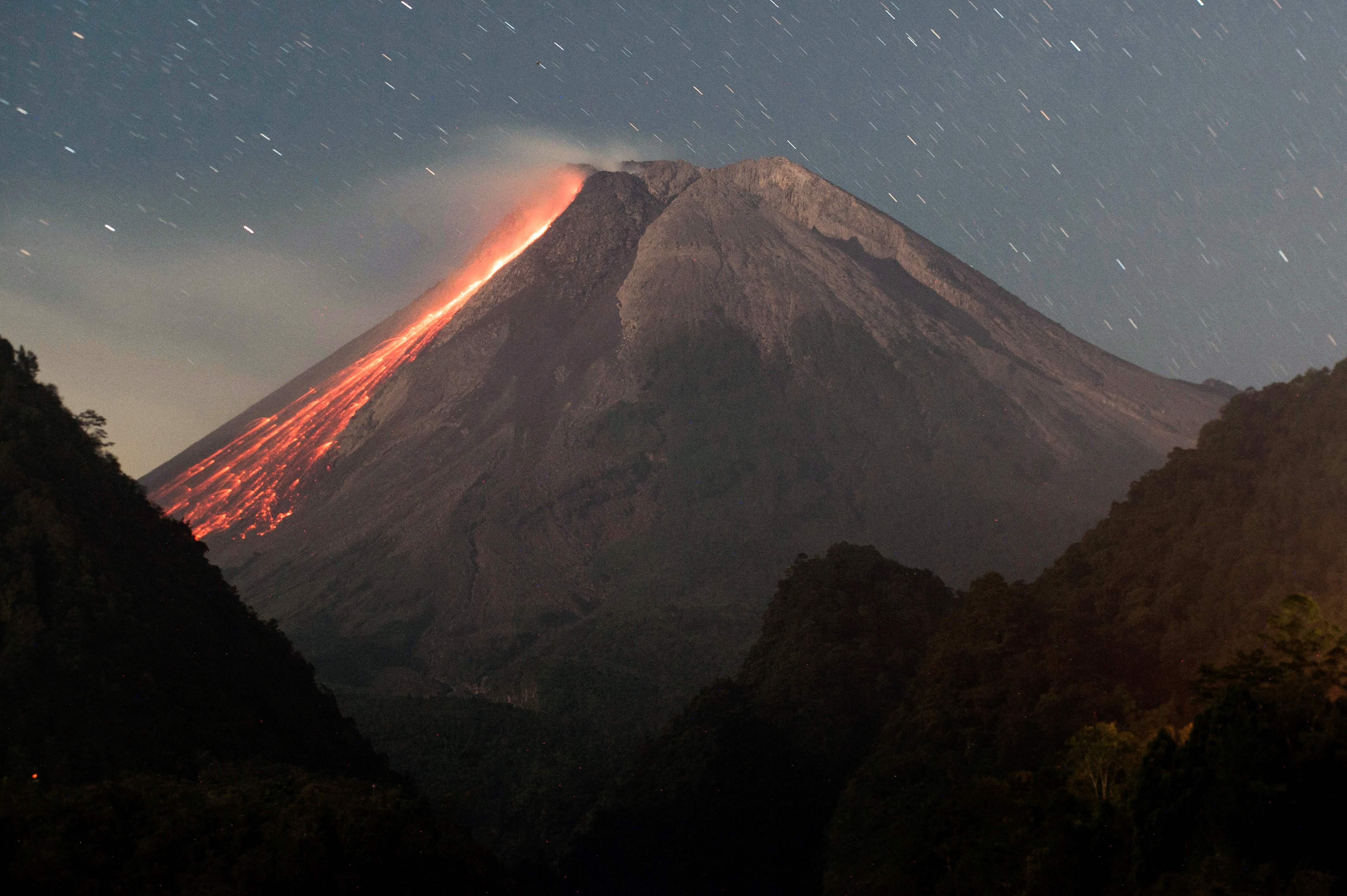Indonesia’s Mount Merapi erupts spewing lava and gas and blanketing nearby towns in hot ash
Volcano on densely populated island of Java unleashes rocks and other debris

Your support helps us to tell the story
From reproductive rights to climate change to Big Tech, The Independent is on the ground when the story is developing. Whether it's investigating the financials of Elon Musk's pro-Trump PAC or producing our latest documentary, 'The A Word', which shines a light on the American women fighting for reproductive rights, we know how important it is to parse out the facts from the messaging.
At such a critical moment in US history, we need reporters on the ground. Your donation allows us to keep sending journalists to speak to both sides of the story.
The Independent is trusted by Americans across the entire political spectrum. And unlike many other quality news outlets, we choose not to lock Americans out of our reporting and analysis with paywalls. We believe quality journalism should be available to everyone, paid for by those who can afford it.
Your support makes all the difference.Indonesia's Mount Merapi has erupted, sending clouds of hot ash and gas high into the air and flows of lava down its slopes.
The volcano, on the densely populated island of Java, unleashed rocks and other debris down its southwest side several times on Sunday.
Mount Merapi is Indonesia’s most volatile volcano and has seen increased activity in recent weeks, with its lava dome growing rapidly before partially collapsing.
There were a series of fast-moving pyroclastic flows – a volcanic phenomenon includes turbulent and hot avalanches of hot lava rocks, ash and volcanic gasses mixed together – after the eruption started at around 5am local time (11pm Saturday BST).
The volcano sent hot ash a kilometre into the sky and clouds of gas up to three kilometres down its slopes.
Hanik Humaida, head of the Volcanology and Geological Hazard Mitigation Centre in the city of Yogyakarta, said ash from the eruption had blanketed several villages and nearby towns.
The rumbling sound could be heard several kilometres away and people living nearby were warned about the danger of lava, but there were no casualties reported.
People living on the volcano’s slopes were told to stay at least five kilometres away from the crater’s mouth, Indonesia’s Geology and Volcanology Research Agency said.
The 2,968-metre volcano’s last major eruption was in 2010, when 347 people died.
In January, Mount Merapi erupted 30 times in a single day, again prompting lava flow fears.
Additional reporting by agencies
Join our commenting forum
Join thought-provoking conversations, follow other Independent readers and see their replies
Comments